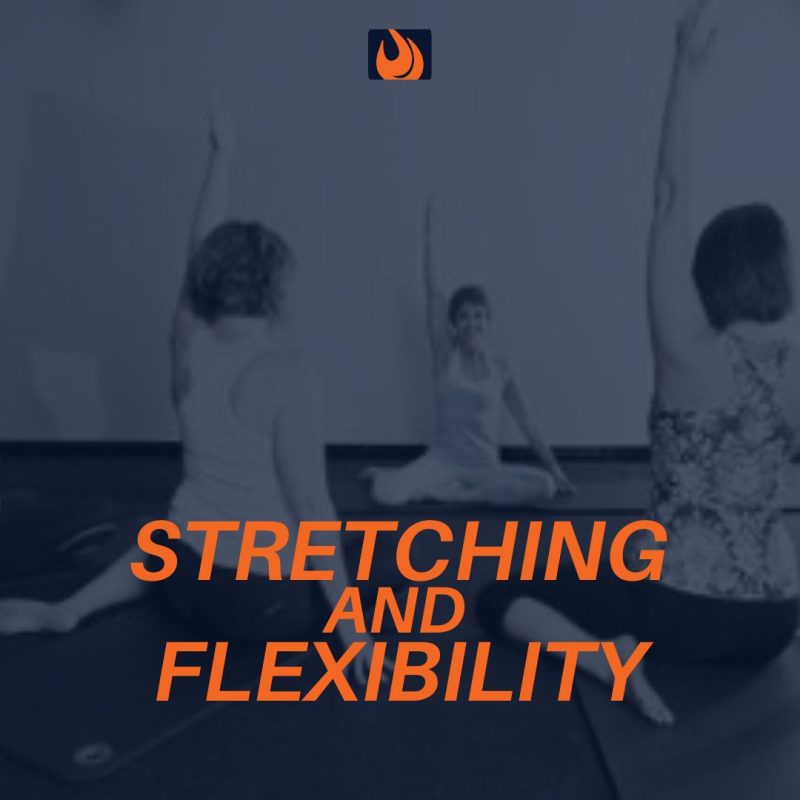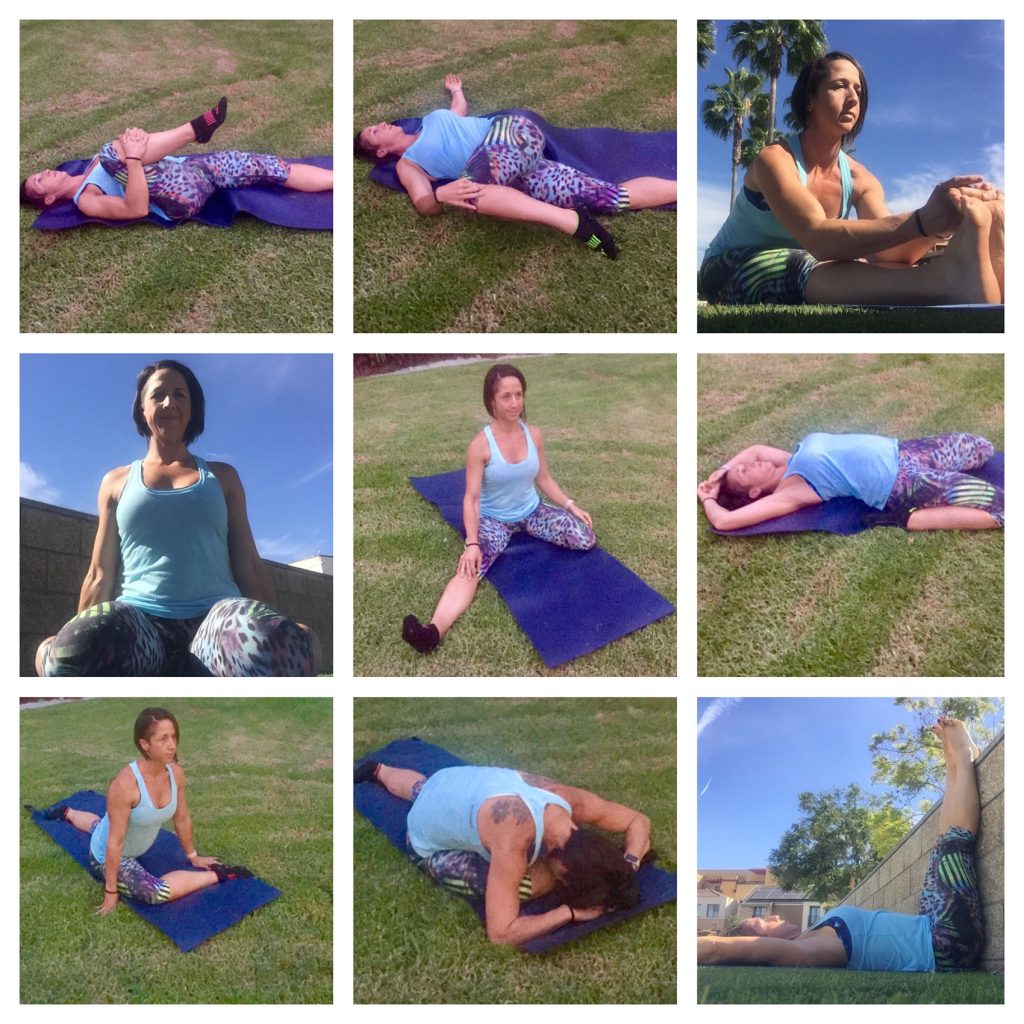
Flexibility training is comprised of many stretching approaches and should be an integral part of a complete exercise program designed by a skillful certified personal trainer. Stretching properly is an effective means of preventing injury and enhancing athletic performance by making the body more adaptable to the demands imposed upon it.
Clients don’t need to acquire contortionist-like elasticity of the muscles to reach flexibility goals. They simply need to obtain a balance of the musculature surrounding each joint. The following provides a foundation necessary to achieve flexibility goals. A few examples are given for each technique, but keep in mind that these stretching techniques can be applied to each muscle group.
How Does Stretching Improve Workout Quality?
Personal trainers are responsible for ensuring their clients cultivate a safe and injury-free relationship with exercise. Performing a client assessment to determine where their limitations lie and what muscles need the most work is critical to seeing progress. One of the many ways to avoid a client injury is to show them how to utilize stretching for more effective exercise results.
Stretching is the intentional warming and lengthening of muscles to improve range of motion and increase flexibility. It’s a fundamental part of any workout that all trainers should incorporate into their client’s routines.
However, stretching isn’t as straightforward as it seems. Many people struggle to embrace the discomfort that comes with flexibility training. And everyone has different limitations in terms of what is realistically achievable.
The objectives of your client should be the main focus when developing a flexibility and stretching routine. If their goal is to do a middle split, regular training of the quads, hip flexors, and deep hip external rotators would be appropriate.
On the other hand, if their goal is simply to become generally less tight or stiff in everyday life, you need a very different flexibility training routine. The best trainers determine what their client’s goals are, and which parts of the body require the most attention in this area.
Make Flexibility Efforts Count
The aim of stretching is for your client’s flexibility to have a lasting impact on the body. Muscles require consistency both to strengthen and remain extensible. The exercise plan you create will need to take both short-term and long-term elements into account.
One way to facilitate long-term flexibility is to take into account the related importance of mobility and muscle strengthening via the use of myofascial release. Self-myofascial release (SMR) is a form of physical therapy that focuses on relieving pain, promoting mobility, and facilitating post-workout recovery.
The word myofascial refers to the fascia, which is a thin casing of connective tissue that coats the surface area of every organ, muscle, nerve fiber, blood vessel, and bone in the body, that is present within muscle tissue.
By carefully stretching and working the muscles, SMR aims to release tension within the fascia, ultimately improving mobility, flexibility, and range of motion. You can also use SMR to help your client improve oxygenation and blood flow towards the muscles.
Range of Motion
The distance through which a joint articulates is what is called that joint’s range of motion. Each synovial joint in the body moves through an active or passive range of motion in various anatomical planes determined by that joint’s shape and the extensibility of the surrounding soft tissues.
While joint flexibility beyond these values is rarely cause for concern, a lack of flexibility in any joint indicates a problem area that may be more easily injured should the joint structures ever be challenged. The goals of any complete exercise or athletic training program should include a consistent, progressive pattern of improved flexibility.
Why Do Our Clients Need to Stretch?
Adaptability
One of the primary reasons for developing at least “normal” flexibility is to allow the body to adapt to the demands imposed upon it without the demands resulting in injury. These demands may come in the form of a specific activity or simple postural stresses. This makes improving flexibility a high priority for everyone from the sedentary businessman to the most active of athletes.
For example, if your job requires you to sit in front of a computer screen all day long, your ‘fidgeting’ and resulting unique postural stresses may call upon the increased flexibility of the posterior spinal structures and the shortening or inflexibility of the anterior structures. Over a period of time, the connective tissues adapt, likely resulting in pain due to the overextension of the muscular and ligamentous structures and the back joints’ inability to adapt to and counteract the postural stresses.
At this point, such a condition requires immediate attention to prevent further inappropriate adaptations and to restore a balance of flexibility throughout the joints. Ignoring such a problem may result in injury significant enough to require the intervention of a medical professional.
In the case of the athlete, it is the ballistic stress and the extreme ranges of motion that are applied to the joints and soft tissues that require that the necessary flexibility be available to prevent injury. For instance, a sprinter who lacks sufficient hamstring flexibility to accommodate to the high velocity, full-range movements at the hip and knee and to balance the strength of the quadriceps is at risk of suffering a tear of the hamstring muscles when performing at top speeds.
Performance Enhancement
In addition to preventing injury, flexibility also plays a significant role in improving overall athletic performance. Returning to the previous example, we can identify two major factors that influence the success of a top-level sprinter, stride length and stride frequency. Stride frequency is primarily dependent on factors such as strength or power and running technique.
While stride length is also influenced by these factors, it is also determined by lower extremity flexibility. In other words, if two sprinters have identical technique, muscular power, and limb length, but one sprinter lacks sufficient flexibility to maximize stride length, the more flexible sprinter will win the race due to a longer stride assuming the same stride frequency.
Furthermore, 2023 meta-analysis indicates that both muscle strength and power can increase when a static stretching routine is included in a workout program. Women, sedentary, and older individuals saw the most benefit.
Contraindications to Stretching
Unless directed by a health professional, the following represents situations in which stretching exercises are not appropriate.
- Bony blocks that limit motion
- Recent fractures
- Evidence of an acute inflammatory process (heat, redness, swelling)
- Sharp acute pain with elongation of the muscle.
- Indications of existing tissue trauma
Different Stretching Techniques
Static Stretching
Static stretching techniques are those that we typically associate with individual stretching exercises. These stretches are performed by moving a joint to its end range of motion and beyond until the desired stretch is felt in the target muscle. The stretch is held elongated for a prescribed period of time and then relaxed.
The time periods may vary from 30 to 90 seconds depending on the intensity of the stretch. For instance, the lower the intensity of the stretch the longer it should be held to maximize effect. A minimum of 30 seconds is required in order for the golgi tendon organs to receive the message to relax the muscle belly. Muscles that have been in a chronically short state may require more time in a lengthened position to relax, and hence, holding longer may result in increased muscle length.
Increasing the duration of stretching has been linked with decreases in collagen production, which in turn forces collagen fibers to align in patterns that are far more beneficial for functional range of motion. Essentially, the muscles that are shortened during exercise will have a better chance of lengthening, so clients will not lose the range of motion they need for day-to-day living.
Regardless of the length of time that the stretches are held, the intensity of the stretch should be such that the discomfort in holding the stretch is sufficient that holding it longer than the prescribed time is extremely uncomfortable. If your intent is to hold stretches for 30 seconds, the intensity of the stretch should be such that holding it for longer than 20 seconds is difficult due to the discomfort.
When performed prior to an athletic activity, static stretching may have a negative impact on an athlete’s physical performance. The relaxation of the muscle fibers will limit the body’s reaction time as well as the muscles’ ability to properly fire when called upon to perform. Such diminished effects may last for up to 2 hours…well past the competitive event.
Post-workout is the optimal time to perform static stretches, since the muscles are already warmed up, rendering joints and ligaments much more elastic than is found pre-workout. In fact, such relaxing movements after intense exercise are valuable in injury prevention and alleviating the intensity of natural muscle soreness.
Examples of static stretches:
Seated Hamstring Stretch – While seated on the floor, place the sole of one foot against the inside of the opposite thigh with the opposite knee extended. Keeping the back straight, lean the torso forward until a strong stretch is felt in the back of the thigh. Hold for 15-60 seconds and then relax.
The Standing Quadriceps Stretch – While standing, grasp one ankle and bring the heel to the buttock. Push the knee downward toward the floor and push the hip forward while keeping the back straight until a strong stretch is felt in the front of the thigh. Hold for 15-60 seconds and then relax.
Doorway Chest/Biceps stretch – Grasping the inside of a doorway with both hands, step through the doorway keeping the arms and back straight until a strong stretch is felt in the chest and biceps. Hold the stretch for 15-60 seconds and then relax.
Dynamic Stretching
Dynamic stretching involves the active and purposeful tightening of muscles, in an effort to mobilize joints gently through their full range of motion. Although dynamic stretching requires a greater level of coordination, it is nonetheless a training necessity for all levels of fitness and should be tailored as such. The benefits in improving functional range of motion and mobility in sports and movement makes dynamic stretching the favored choice for warming up and movement prep. Dynamic stretching has been observed by athletes to improve such skills as agility, speed, and acceleration, all of which are valuable when engaging in a variety of sports.
Dynamic stretches are most effective when they can involve as many muscle groups as possible.
Examples of dynamic stretches:
Toy Soldier -“March” in place or forward with straight arms and legs, with opposite arm and leg operating in the fullest range of motion possible.
Prisoner Squat – Standing with hands behind head and elbows reaching to meet in front of your face, drop down into a squat while opening elbows and stretching chest. Return to start position.m
Walking lunge with rotation– Take forward, alternating lunge steps with arms extended in front of chest and hands together. Instruct client to rotate only 15-30 degrees over the front-lunging leg, and then return to center before initiating next lunge-step.
PNF Stretching Techniques
Proprioceptive Neuromuscular Facilitation (PNF) stretching techniques take advantage of the brief period of relaxation that follows maximal muscular contractions. These stretches require the use of a partner to apply appropriate resistance to the target muscle while contracting it from a stretched position and to assist with the elongation of the target muscles.
The procedure for this technique is as follows:
1) Place the target muscle in a comfortably stretched position.
2) Contract the target muscle isometrically for 5-10 seconds against the resistance applied by your partner.
3) Relax the target muscle.
4) Your partner assists in elongating the muscles through the gained range.
5) Hold the stretch for 15-60 seconds and relax.
PNF Stretches
Supine Hamstring Stretch – With the assistance of a partner, lie on your back and raise one leg, keeping the knee straight, until a strong stretch is felt in the back of the thigh. Contract the hamstring muscles isometrically against your partner’s resistance for 5-10 seconds and then relax. As you relax, allow your partner to increase the intensity of the stretch to a tolerable level, hold for 15-60 seconds, and then relax.
Prone Quadriceps Stretch – With the assistance of a partner, lie on your stomach and bend one knee, keeping the back and hip straight, until a strong stretch is felt in the front of the thigh. Contract the quadriceps isometrically against your partner’s resistance for 5-10 seconds and then relax. As you relax allow your partner to increase the intensity of the stretch to a tolerable level and hold for 15-60 seconds and then relax.
Chest/Biceps Stretch – With the assistance of a partner, extend your arms behind you with palms out and elbow straight until a strong stretch is felt in the chest and biceps. Contract the chest and biceps isometrically against your partner’s resistance for 5-10 seconds and relax. As you relax allow your partner to increase the intensity of the stretch to a tolerable level and hold for 15-60 seconds and then relax.
Reciprocal Inhibition Stretching Techniques
When a muscle contracts, its antagonist relaxes through a neurologic process called reciprocal inhibition. This effect is heightened by contracting the antagonist of the target muscle against mild resistance, and therefore, can be used to increase the effect of stretching exercises.
You can perform reciprocal inhibition techniques alone as in the static stretches, or with a partner as in the PNF Techniques.
The procedure for using reciprocal inhibition stretching techniques is as follows:
1) Place the target muscle on a mild stretch.
2) Isotonically contract the antagonist to the target muscle.
3) While contracting the antagonist isotonically the target muscle is elongated as the joint moves.
4) Hold the target muscle on stretch for 15-60 seconds and then relax.
Supine Hamstring Stretch – Lying on your back, raise one leg upward keeping the knee straight (you may wish to utilize some form of assistance at this point). Contract the quadriceps as if you were performing a kicking motion while attempting to increase the intensity of the stretch. Hold the stretch position for 15-60 seconds and relax.
Quadriceps Stretch – Lying on your stomach, bend one knee keeping the hip and back straight. Contract the hamstring muscles while attempting to increase the intensity of the stretch. Hold the stretch for 15-60 seconds and relax.
Chest/Biceps Stretch – With the assistance of a partner, extend the arms behind you with the elbows straight and the palms outward. Contact the back muscles as if to bring the hands together behind you while your partner increases the intensity of the stretch to a tolerable level. Hold the stretch for 15-60 seconds and relax.
You may wish to use these reciprocal inhibition techniques in combination with PNF stretches. Upon completion of the target muscle contraction, actively contract the antagonistic muscles to further relax the target muscle group and increase the intensity of the stretch even further.
Eccentric Training?
Yes, you read that right. A recent study indicates that at-home eccentric training may have more positive outcomes on physical capacities, at least for older women, than stretching alone. Fifty-one women were assigned to either static stretching, dynamic closed-chain stretching, or eccentric training exercise groups.
Interestingly, muscle length and flexibility increased in all groups, but not musculotendinous stiffness after 6 weeks of training and one-month follow-up. However, the eccentric training group enjoyed the added benefit of knee flexor and calf eccentric peak torque and gait speed whereas the other two interventions did not. The strength was maintained even after 4 weeks of detraining.
Yoga Stretching
Yoga stretches are quite often static in nature, and are therefore ideal post-run or athletic activity. Yoga stretches differ from static stretches in that they are traditionally done as postures that are held for a few cycles of breath.
Yoga Compression
In addition to stretching, yoga postures often provide compression to certain joints. Compression postures temporarily restrict blood flow to the area that is being stretched. Once the compression is released, as the flow of freshly oxygenated blood comes rushing back in, the buildup of toxins, for example, lactic acid and scar tissue, can be flushed out.
Yoga Stretches
Wind Removing with twist Pavanamuktasana with Matseyendrasana (flexors, glutes, calves)
Lie on your back and extend one leg keeping the foot flexed to stretch the calf. Bring the other leg in toward your chest and pull about 2-3 inches below the knee. The pinch in the hip will compress the hip flexor. Release one hand after 30 seconds and keep the opposite hand on the knee. Gently pull the knee across your chest across the body. Keep both shoulders on the ground while holding the twist for 30 seconds. Repeat on the other side.
Fixed firm Supta Vajrasana (flexors, quads)
This can be done one leg at a time, but two legs at a time feels great. Channel your inner child and sit with your knees bent, hips between the feet. Keep both knees on the ground. If you’re completely seated and knees stay on the floor, you can lie back until your shoulders sit on the floor. Then bring your arms overhead and cross the elbows. Sitting back is not required; especially if there is any pain in the knees. Hold the posture for 30-60 seconds. Come out the reverse way you went in, lean forward to take pressure off the knees. This one is also a great compression for the knees, so straighten the legs immediately following to get the blood flowing.
Seated Forward Fold Paschimottanasana (hamstrings, calves)
Sit on the ground with both legs stretched out in front of you. Legs zipped up through the inner thighs and feet together. Fold your upper body over your legs and reach for your feet. If you can, grab you feet and hold lightly. The straighter the legs, the deeper the stretch in the calves and hamstrings. If the stretch is too deep, bend the knees. Hold the fold for 30 to 60 seconds. This posture can also be done one leg at a time if preferred. Simply bend one knee and bring the heel of the foot to the opposite leg inner thigh.
Pigeon Kapotasana (piriformis, glutes, TFL)
This posture is kind of like doing figure 4 on the floor. The front leg is bent forming the letter ‘L’, so the foot is straight out from the knee, and the knee is directly out from the hip line. The back leg can be straight behind you. As you feel comfortable, you can lean forward, maybe even lay your upper body flat on the bent leg. Hold the posture one one side for 30-60 seconds, and then repeat on the other side.
Legs up the Wall Viparita Karani (hamstrings)
This final stretch is a passive, yet restorative posture. Sit with one hip touching the wall and twist your hips until your buttox is flat against the wall, and your back is flat on the floor. Extend the legs up the wall and bring your arms straight overhead so they are resting on the floor. To vary this stretch, you can open the legs wider, bend the knees slightly, bend one knee in and extend the other leg.
Formulating a Flexibility Plan
Pinpoint Pain Points
Identifying the parts of your client’s body that need the most work is the first step toward improving their flexibility.
Performing various basic stretches and pinpointing the areas that produce the most discomfort is an important process. Doing this can indicate where to focus your attention during future stretches.
Short muscles (muscles that are in an overactive, contracted position) should never get confused with tight muscles. Tight muscles are typically underactive and in a shortened position.
Understanding the difference between these two states of muscle is essential. Knowing the difference is fundamental to helping your client determine which areas of the body to stretch out more regularly for increased flexibility.
Set Flexibility Fundamental Goals
Goal-setting has proven to be an effective method of obtaining new skills. If your client is seeking to improve their flexibility, setting some realistic goals is a great place to start.
Once you’ve performed your assessment of the client’s current state of flexibility, it’s time to look ahead. You should discuss methods and techniques that align with their future goals and level of capability. Small but specific flexibility goals such as touching toes or squats without lifted heels are great beginner benchmarks.
Whatever your client’s flexibility goals are, it’s your responsibility as their trainer to ensure that those goals are both safe for them to attempt and realistically feasible. Being able to consistently reach their goals is what will drive their confidence and determination forward.
Identify Appropriate Stretching Exercises
Once you’ve established your client’s goals, you can work together to identify stretches and flexibility-enhancing exercises. These exercises will be sufficiently challenging without risking injury.
There’s a wide variety of stretching exercises that are highly effective in the process of lengthening and strengthening underworked muscles. For the back, yoga stretches like child’s pose, cobra, and seated spinal twists can help to facilitate tension release.
For improving hip mobility, you can also draw inspiration from yoga. Frog pose, side lunges, and forward lunges can help to restore or promote flexibility However, you will need to carefully pick stretches you know are safe for your client and suit their objectives and goals for the future.
Draw Up (And Stick To) A Plan
In any journey to success, consistency and determination are integral to the outcome. This becomes especially true within the context of physical well-being. It must become a part of your client’s lifestyle if they are going to see lasting, transformative results.
Drawing up a game plan is where it starts. But sticking to it is what’s needed to see progress become tangible in the long run. Very tight or short muscles take a long time to stretch out, so the flexibility training needs to be executed on a regular basis if your client wants to experience greater mobility.
Some Final Considerations
As stretching does not tax the energy-producing systems like aerobic or anaerobic exercise, it may be performed daily or even several times per day. However, there are several guidelines that should be followed to maximize the results of your flexibility exercises and at the same time prevent injury.
Never stretch a cold muscle. Perform a warm-up of continuous low-intensity exercises that involve large muscle groups to increase body temperature such as cycling, walking, jogging, rowing, etc. Warm compresses can also be applied to the areas to be stretched to increase localized temperature. The increased temperature makes body tissue more extensible, and therefore, easier to stretch with greater comfort. Avoid the use of topical “deep heat” creams as they only create the perception of heat and do not actually increase body temperature.
Avoid using ballistic movements or “bouncing” the extremity at the end range of motion. This will increase the likelihood of injury while stretching. Always move in a gentle and controlled manner.
Never stretch an acutely injured muscle. Stretching can be initiated approximately 48 hours after injury unless the inflammatory symptoms continue. Always increase the intensity of the stretches in a slow, progressive manner after injury.
References
- Therapeutic Exercise: Foundations and Techniques. Kisner, C., Colby L. A. F.A. Davis Company, Philadelphia. 1985.
- Neurorehabilitation: A Multisensory Approach. Farber, S. W. B. Saunders Company, Philadelphia. 1982.
- Muscles: Testing and Function. Kendall, F., McCreary, E. K. Williams & Wilkins, Baltimore. 1983.
- Orthopaedic and Sports Physical Therapy. Gould, J. , editor. C. V. Mosby Company, St. Louis. 1990.







